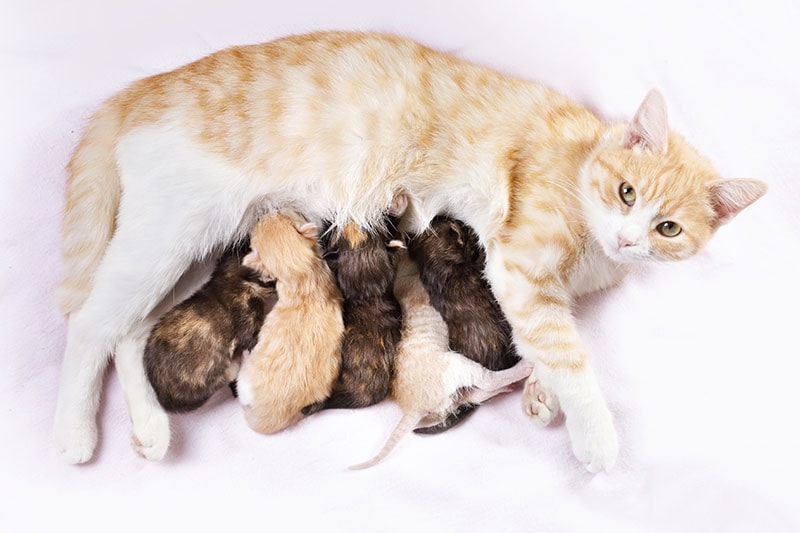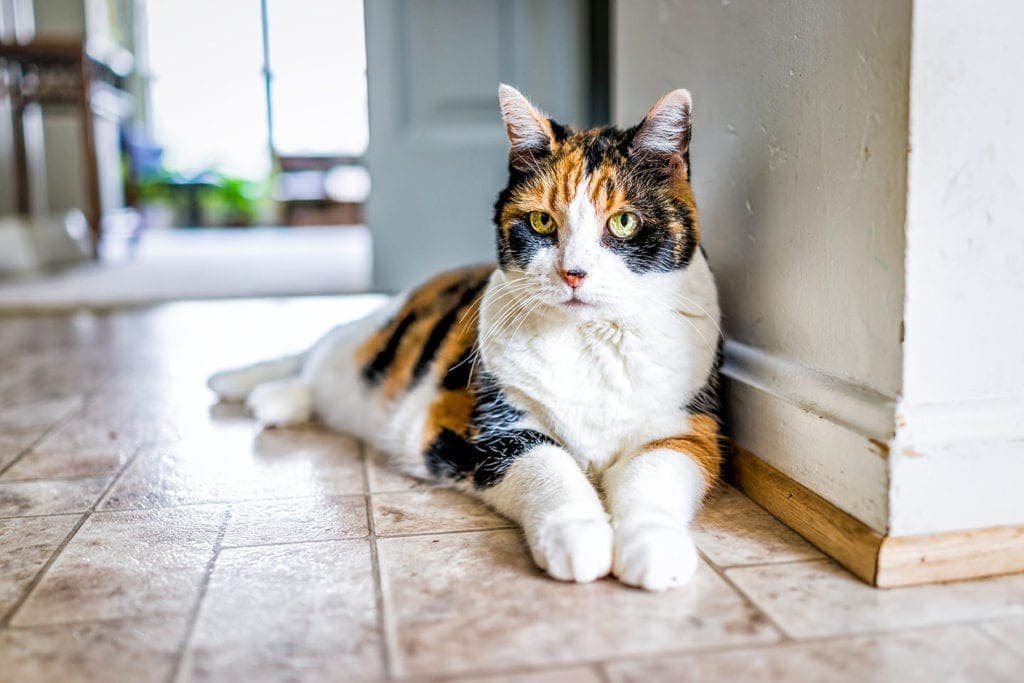VET APPROVED

The information is current and up-to-date in accordance with the latest veterinarian research.
Learn more »Click to Skip Ahead
Mammals have varying gestation rates and reproductive timelines. Some take a very long time to have another cycle, while others can get pregnant right away. So, exactly where does a cat fall?
Maybe your lovely cat just had a litter of unexpected kittens, and you want to ensure you can get them to the vet for spaying before she gets pregnant again. In this article, we’ll discuss how feline reproduction works and why female cats can get pregnant shortly after giving birth.

Cats Can Get Pregnant Almost Immediately
Once your female cat delivers her litter of kittens, she can get pregnant again in a few weeks. Lactation (nursing) does not prevent a heat cycle; if a male mates with a female while she’s in heat, she may become pregnant again. Prolactin, a hormone released when nursing, may suppress ovulation a little bit, but pregnancy is still very possible.
Because the timeline is so soon, keeping her away from unneutered males and discussing with your vet the best time for spay surgery is imperative. Not only can your cat fall pregnant again, but they can also contract diseases or experience high levels of stress around other cats.
If you’re already past that point, you might wonder exactly what to expect with this litter of kittens and how to tell if your cat is expecting another. Let’s discuss the different aspects of cat reproduction so you can speak with your vet about options when the time comes.
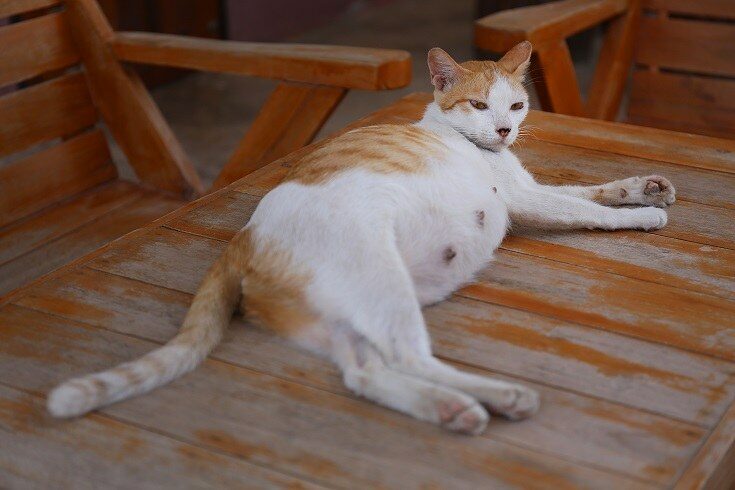

Signs of a Cat in Heat
If your cat already had a litter of kittens, you’re probably familiar with heat cycles. But in case you missed it the first time, there are undoubtedly a few cues that help.
Spotting a cat in heat usually isn’t difficult. These vocal, excessively affectionate females can be easy to identify, but if it’s your first time experiencing it, here are some signs you might notice.
- Flirtatious behavior
- Being extra affectionate
- Rubbing and rolling
- Extreme vocalization
- Raising hind end
- Whipping tail
Unlike dogs and humans, cats do not bleed during cycles. Heat cycles can seem like they last forever; they can range anywhere from 1 to 21 days, but the average is around 7 days. In a single breeding season, a female who has never been spayed can go into a heat cycle two to four times.
Generally, this happens between February and October. So, if your cat recently gave birth to a litter of kittens, and you feel like she’s in heat again, it’s incredibly likely. If she has already entered a new cycle, keep her away from any unaltered male until the cycle passes, and contact your veterinarian right away to schedule an appointment for spay surgery.
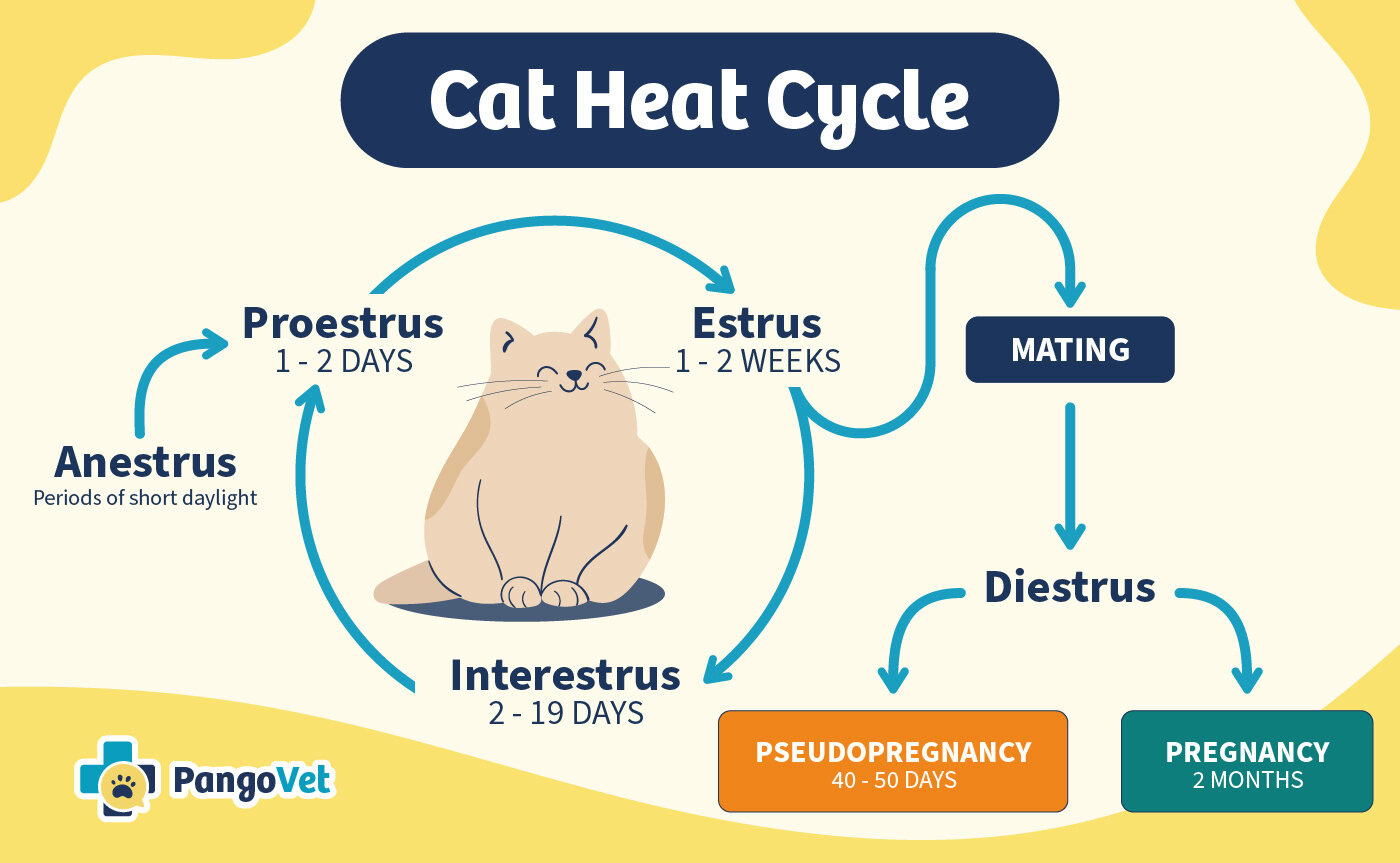
How to Tell If a Cat Is Pregnant
If your cat recently had kittens and you know she has had another heat cycle, you might worry she is pregnant now. So, how can you tell? Some females can show no signs, while others are far more obvious. If your cat was recently pregnant, they will likely display similar behaviors as the first time.
Here are some signs to help identify if your cat is pregnant:”
- Noticeable weight gain
- Swollen nipples
- Sleeping more
- Increased appetite
- More affectionate
Only your vet can determine if your cat is pregnant in the early stages.
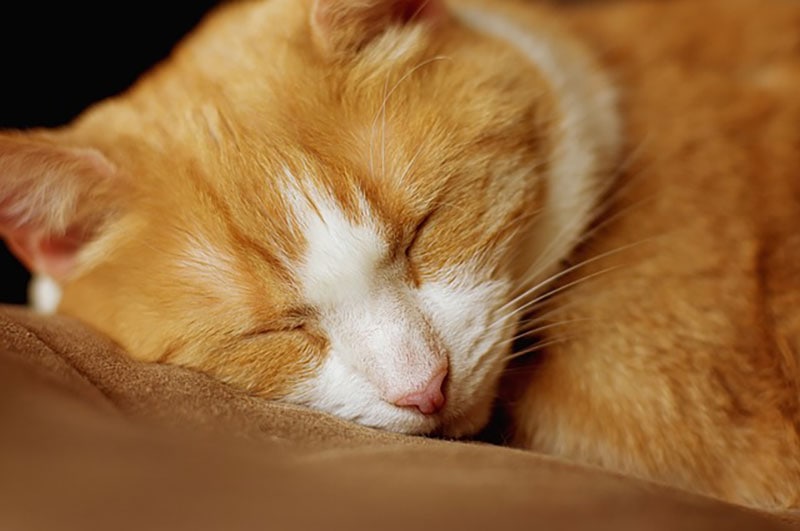

After Care for Kittens and Mother
After the mother gives birth to her litter, it is essential to leave them alone to get acclimated. The mother must recuperate from the long labor and get the kittens cleaned up and fed.
- Keep the mother and her kittens secluded
- Make sure everyone is warm and dry
- Keep an eye on them without interacting
- Make sure all kittens are feeding
- Make sure other pets stay away
- Call the vet with questions or concerns
If you let the mother cat do what is instinctual to her, everything else should flow beautifully.
When Should You Call the Vet?
Most of the time, cats have kittens without an issue.
- Unusual vaginal bleeding or discharge
- Uterine prolapse
- Mastitis
- Poor appetite
- Excessive drinking
- Vomiting
- Disorientation
If you notice any odd behavior, the sooner you respond, the better. The aftermath could be something simple and easy to fix or as dangerous as a kitten stuck in the birth canal. Always take care of potential issues in a timely fashion.
When Can You Handle Newborn Kittens?
Newborn kittens are delicate, just as the mother’s well-being is during this time. Touching them before they reach a week old is not a good idea. Once they turn a week old, you can start handling them individually for equal time.
It is crucial to start handling kittens early, so they acclimate well to people. If the mother seems stressed out or shows obvious signs that she doesn’t want you handling her kittens, it’s best to respect her space.
She is likely dealing with hormones and protective instincts that come naturally to her. Mother cats leave their kittens alone for longer intervals between checking on them, so you can always take 5 minutes to pick up and handle the kittens when the mother is away.
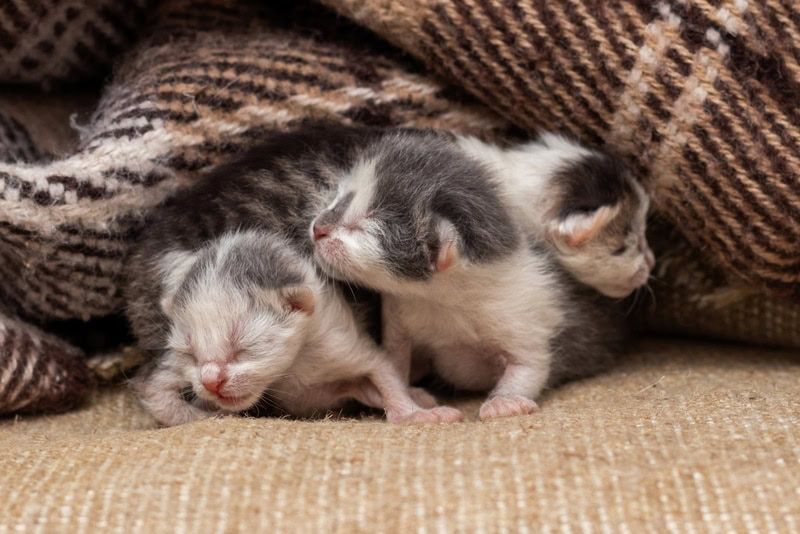
When Can You Wean Kittens?
Kittens are ready to start the weaning process between 3 and 4 weeks of age and to start the transition to solid food. It is important to introduce solid foods slowly so the mother and the kittens can adjust to the change. Initially, you’ll want to soften the food to make it easier for them to eat.
After all, going from drinking their mother’s milk to chewing hard kibble can be a little tricky. You can gradually introduce more and more solid food. By 6 to 8 weeks of age, the kittens should be fully weaned and ready to go to their respective homes.
When Can You Rehome Kittens?
Ideally, you should never re-home kittens before they turn 8 weeks old. This time gives them adequate space to grow, learn, and socialize with their littermates. This will also ensure they have well-formed personalities and a clean bill of health.
You should always vet the kittens before they go to their respective homes. That way, you’re giving your kitties a fantastic start in life. Screening potential owners is a must! Many people want cats but aren’t necessarily good candidates to care for them.

Spay Surgery
If you plan to keep the kittens for a few months before finding them a home, neutering and spaying them is a good idea. Most veterinarians recommend getting a cat spayed or neutered before they turn 6 months old.
If you wait longer, they could peak in sexual maturity and start undesirable behaviors like heat cycles and spraying. For a female who has recently had kittens, spaying is usually undertaken when the kittens are weaned at around 6-8 weeks. Speak to your veterinarian for their recommendations on the timing of spaying after giving birth.
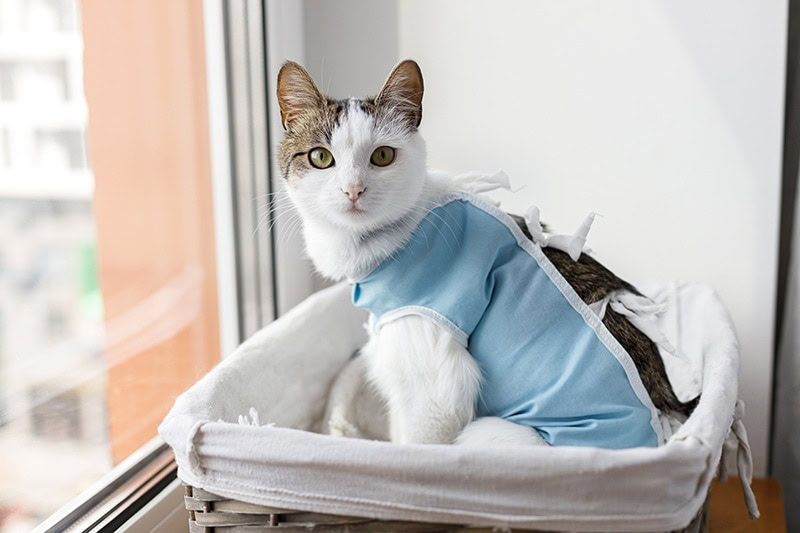
Can You Spay a Pregnant Female?
If your female has fallen pregnant, she can still be spayed. As the surgery involves aborting the developing kittens, it is a controversial topic, and it’s usually not recommended.
Benefits of Spaying Your Cat
The benefits of spaying and neutering cats far outweigh the risks.
- Your cat’s heat cycles will stop
- No more risk of pregnancy
- Decreases risks of mammary cancer
- It increases better behaviors
- It decreases spraying
- It will make your cat less likely to run off
Reasons Not to Spay Your Cat
The main reasons not to spay or neuter your cat are if you want them to breed or if they have an underlying health condition that increases their risk of anesthesia and surgery. Other less troubling postoperative complications include inflammation, infection at the incision site, reopening of the incision, and swelling.
These problems are generally uncommon and often avoidable. Fear of these complications should not prevent you from spaying your cat.

Homelessness Is an Epidemic
The number of homeless cats in the United States alone is concerning. There are an estimated 30 to 40 million strays (but it may be higher). Of the 2.7 million animals euthanized every year, 1.4 million are cats. That is an astronomical number. Even with the best efforts of shelters and rescues, more is needed to ensure cats have a safe and healthy home.
Approximately 1.3 million cats are placed into forever homes annually, and about 100,000 cats are returned to previous owners. This accounts for only 5% of shelter chats that come into shelters as strays are returned to their owners. Only 37% are adopted, and a whopping 41% are euthanized.
Not getting your cat spayed or allowing your cat to have kittens can seriously impact this already problematic situation. Even if we try to ensure we’re giving our cats the best homes possible, it may result in irresponsible ownership and rehoming.
The bottom line is that our cats do much better when spayed or neutered before sexual maturity. You can enjoy their long lifespan with you without many, if any, significant drawbacks or complications.
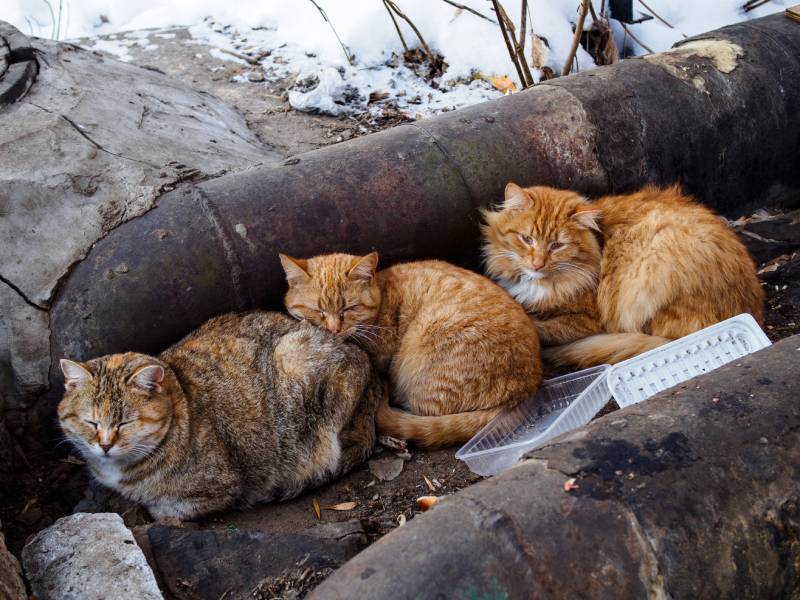

Conclusion
Even though kittens are adorable, there are too many without homes. Cats can get pregnant very shortly after having a litter. If your cat keeps reproducing, it will only add to the problem of many loving cats ending up in shelters. To combat this problem, discuss spaying with your vet.
Spaying a cat is better in the long run. Not only can it decrease the homeless population, but it can also reduce the likelihood of your cat developing behavioral and health issues.
Featured Image Credit: Tiplyashina Evgeniya, Shutterstock
